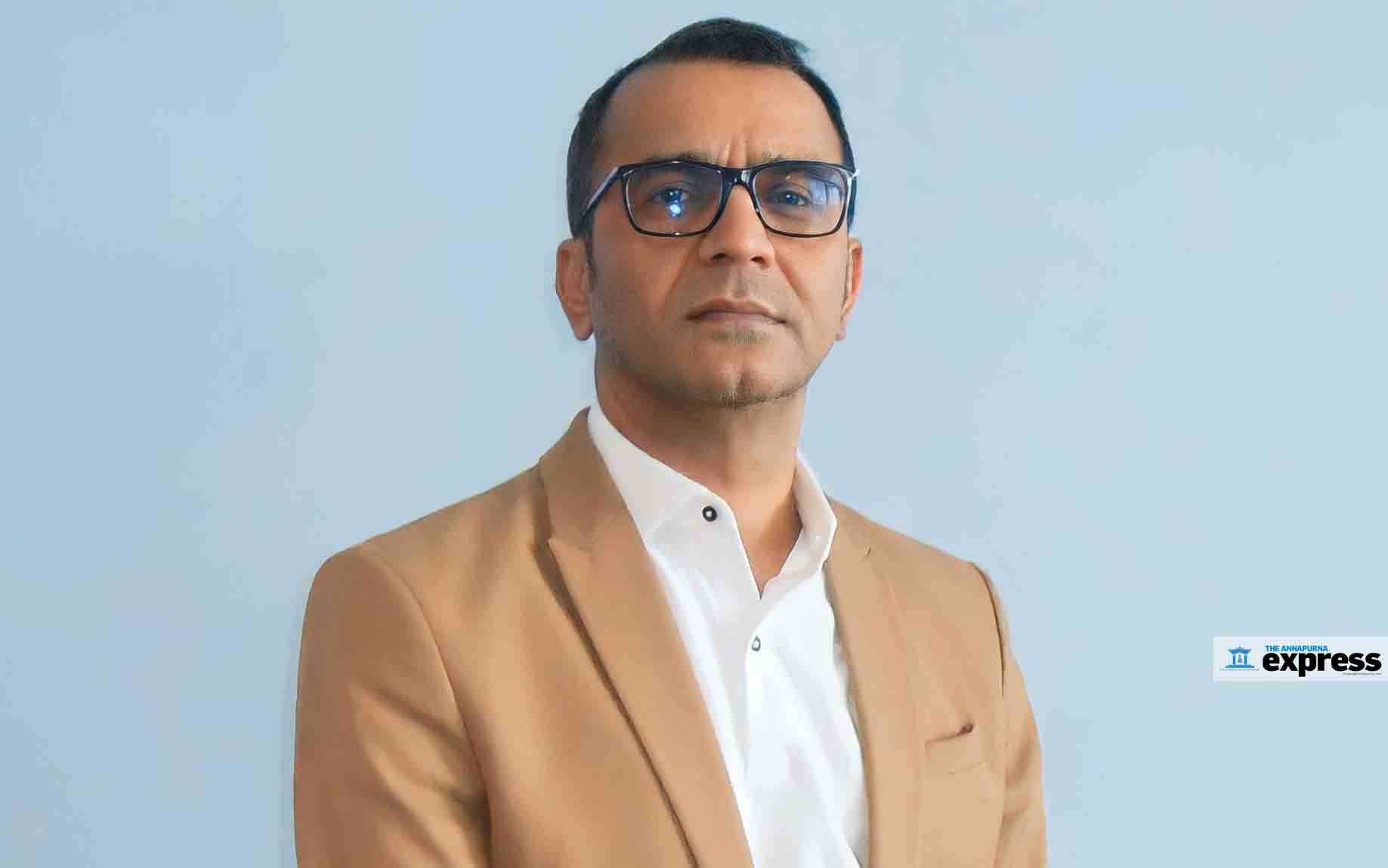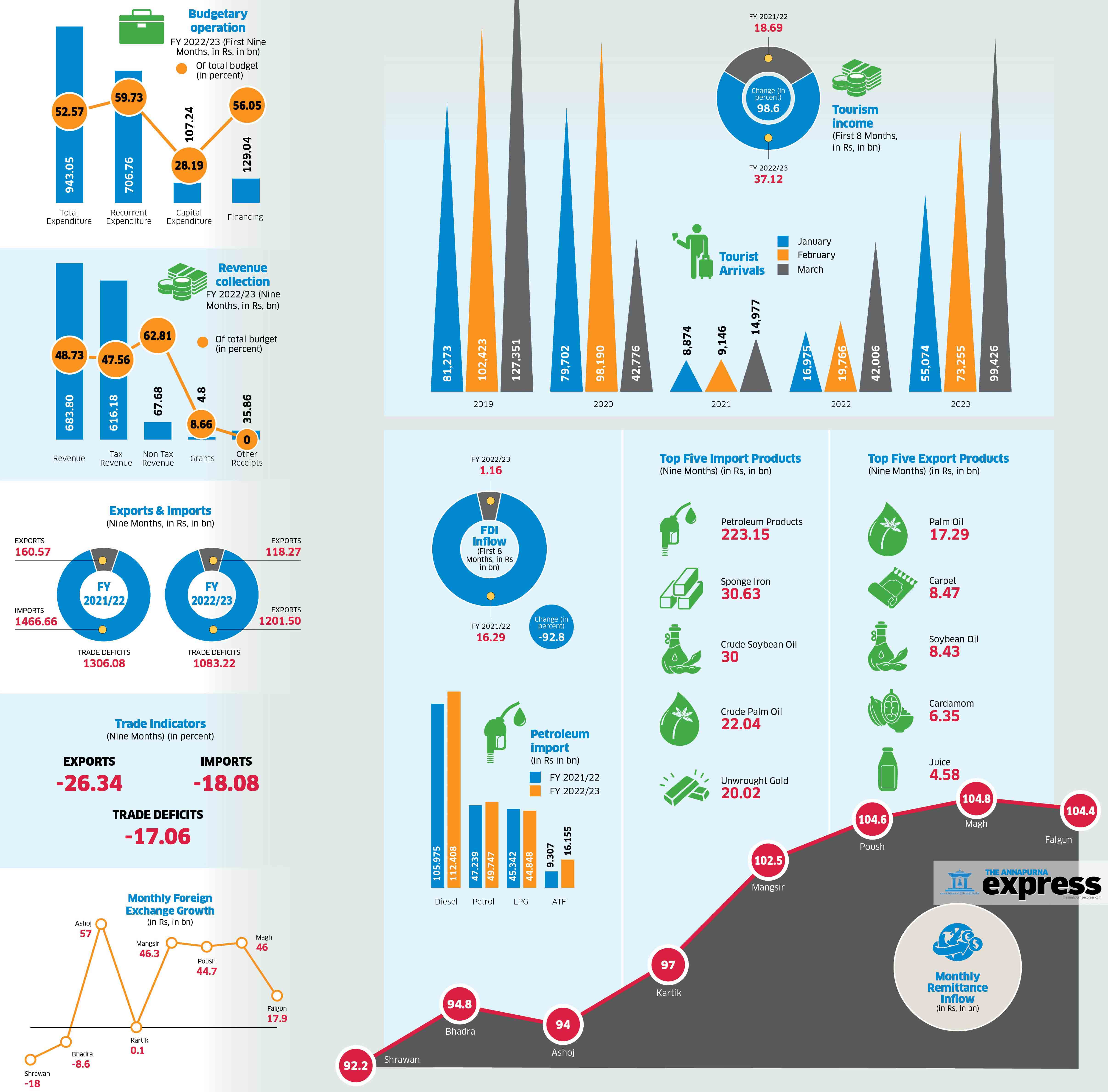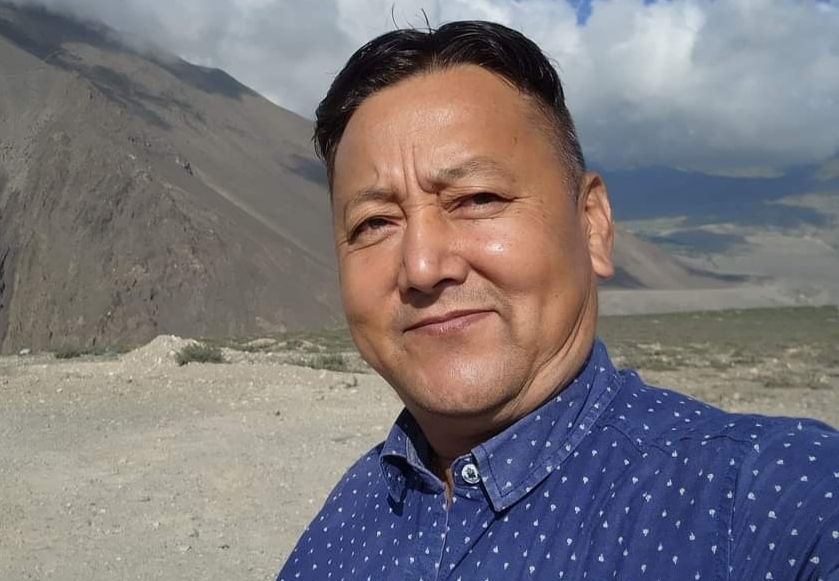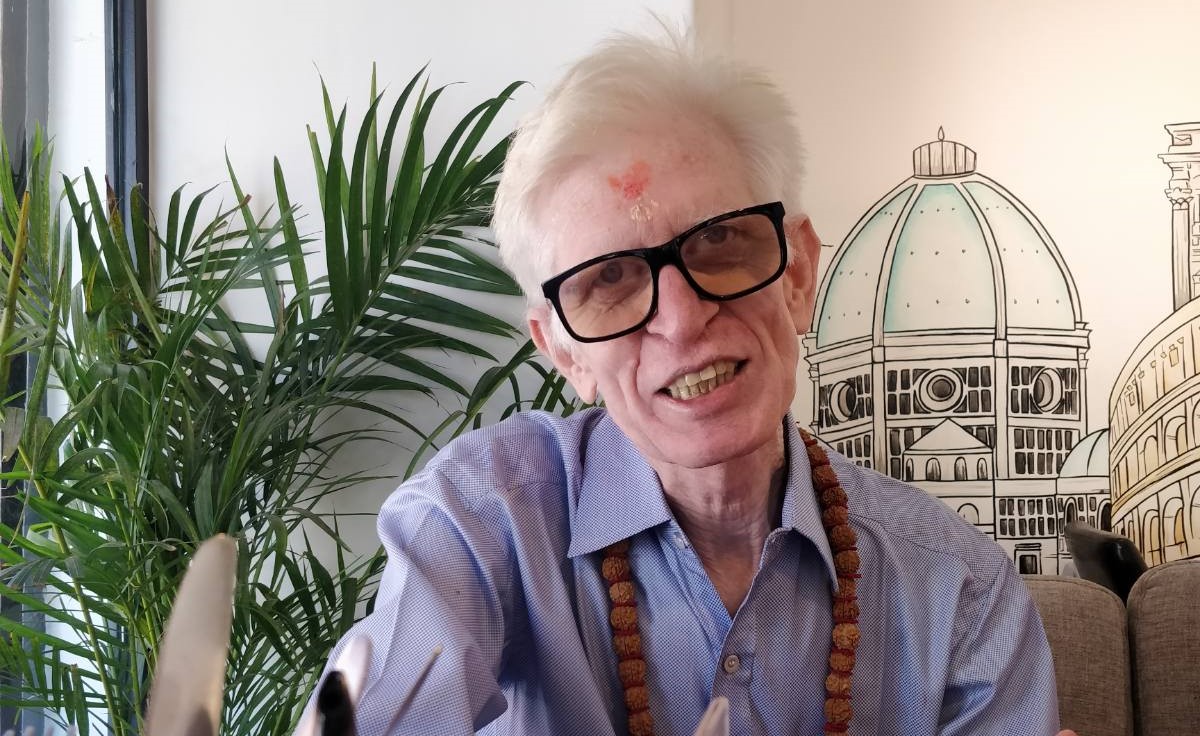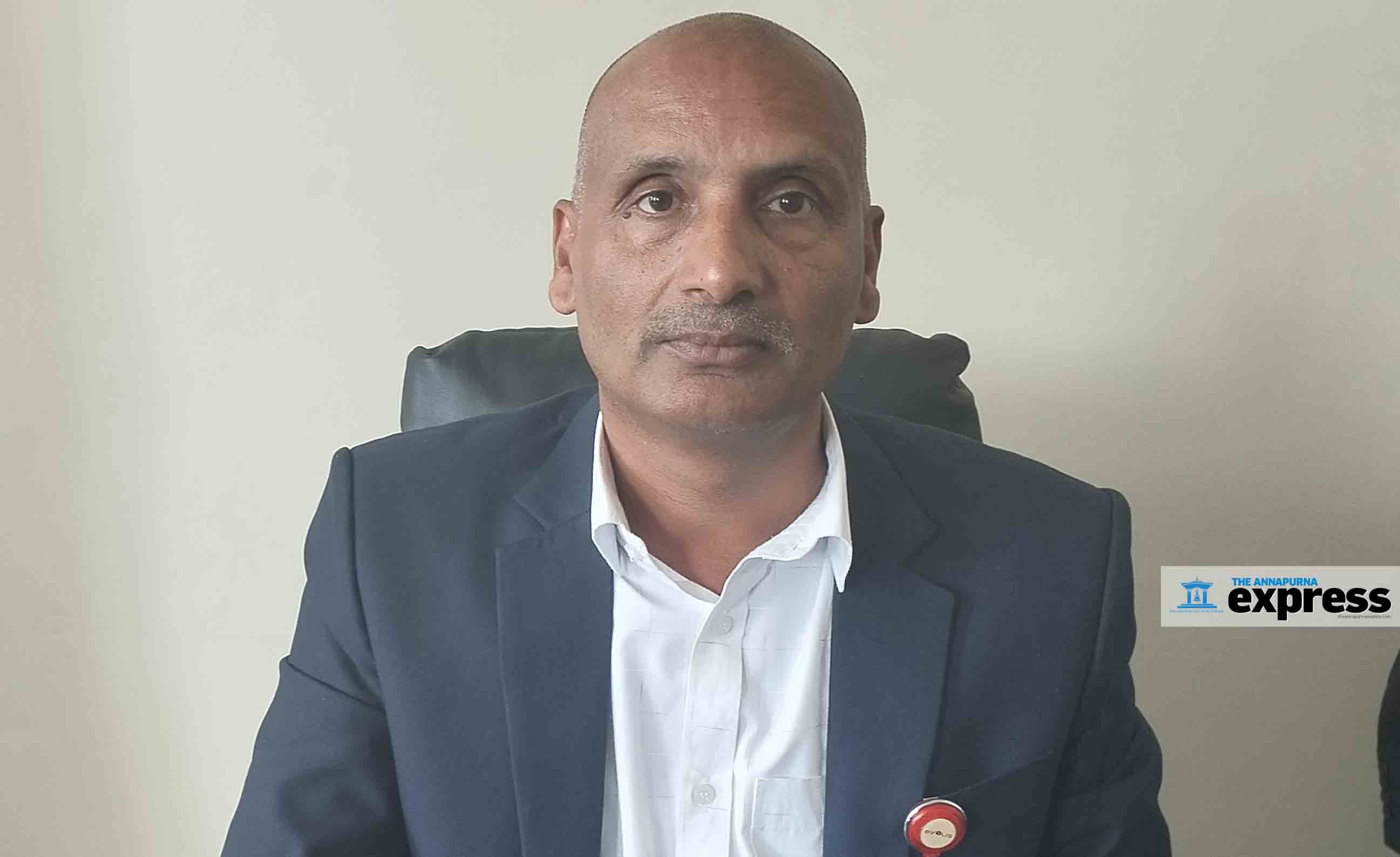Jorg Bahr: Two decades for Nepali education
Rabindra Puri Foundation for Conservation (RPFC) on Friday organized a farewell program for Jorg Bahr, who has been doing philanthropic work in Nepal for over two decades. Born in Germany in 1940, Bahr came to Nepal in 1999 after his retirement as German Army Colonel and started working for the improvement of Nepal’s education with a main focus on rural areas, it was informed at the program.
Realizing that there will be no development of the community and the country without education, his organizations have been supporting the construction of infrastructure for 12 community schools like school buildings, science labs, computer labs and providing scholarships as well as educational materials.
“After retiring from my job 22 years ago, a Rotarian professor friend brought me to Nepal and since then I started visiting Nepal 2-3 times a year,” Bahr said. I have become a part of education-health programs in operation in Nepali villages. Thus, I have become a German by birth and a Nepali by deed.” 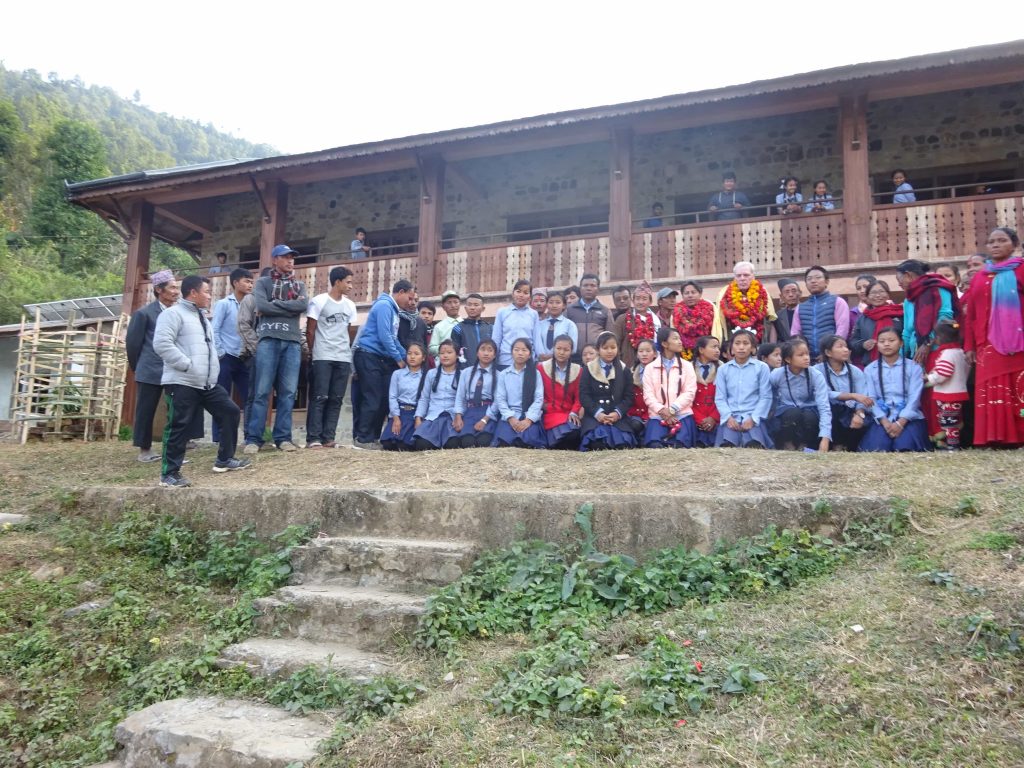 In 2009, he established ‘Schulerhilfe fur Nepal’ (School help for Nepal), which has constructed nine out of 12 planned school buildings and associated infrastructure—in Kavre, Gorkha, Bhaktapur, Ramechhap, Gorkha and Nawalparasi through RPFC—per information provided at the program.
In 2009, he established ‘Schulerhilfe fur Nepal’ (School help for Nepal), which has constructed nine out of 12 planned school buildings and associated infrastructure—in Kavre, Gorkha, Bhaktapur, Ramechhap, Gorkha and Nawalparasi through RPFC—per information provided at the program.
Nepal Vocational Academy (NVA), operating from Kamalbinayak (Bhaktapur) in collaboration with the Schulerhilfe fur Nepal and RPFC, aims to produce 100 skilled personnel every year. In Thambesi, a village in Nawalparasi, around 250 students study at Chhatisdevi Secondary School, which boasts of a well-equipped and solar-powered computer lab, courtesy of Schulerhilfe fur Nepal.
Saraswati Primary School in Kavre, Bhimeshwar Basic School, Sri Krishna High School and Shatlingeshwar Higher Secondary School in Ramechhap have new infrastructure, with help from Schulerhilfe fur Nepal, benefiting around 5,000 children studying there. 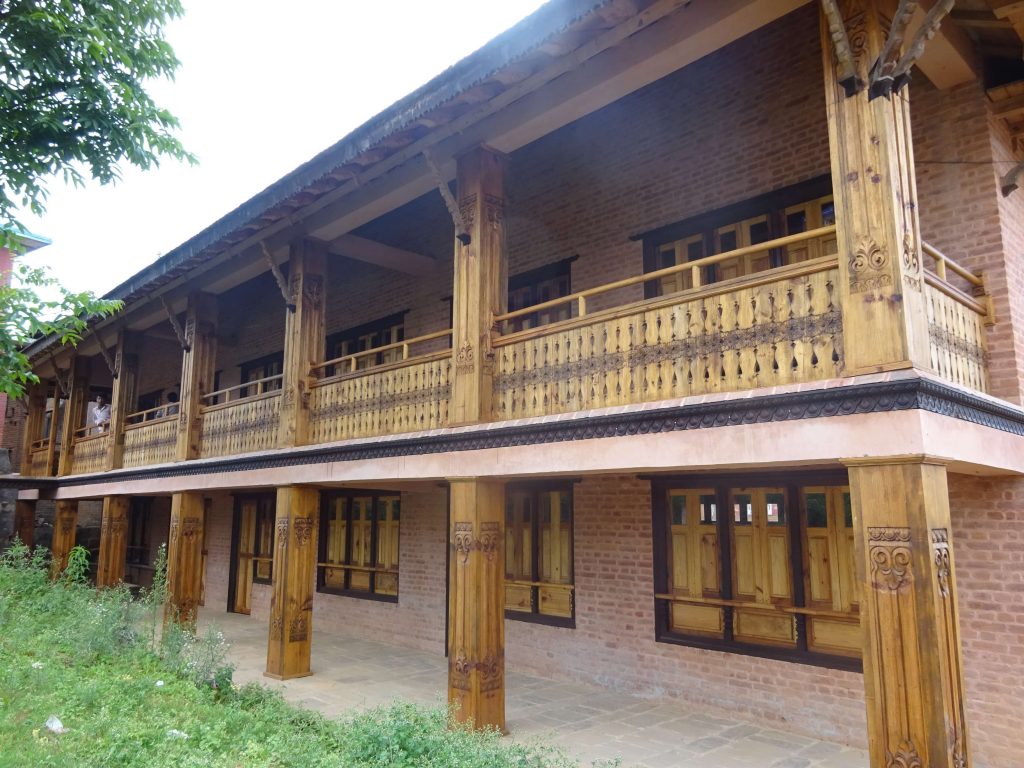 RPFC has been coordinating with the campaign of Schulerhilfe fur Nepal to construct community school buildings, associated structures and rehabilitating heritages, with about Rs 10m already collected reportedly for the campaign.
RPFC has been coordinating with the campaign of Schulerhilfe fur Nepal to construct community school buildings, associated structures and rehabilitating heritages, with about Rs 10m already collected reportedly for the campaign.
After the 2015 earthquake, Schulerhilfe fur Nepal helped with the distribution of Pall filters, reconstruction of damaged school buildings as well as some houses. It has also provided support to Dhulikhel Hospital, Scheer Memorial Hospital in Banepa, Sushma Koirala Hospital in Sankhu, Tilganga Eye Hospital, Iwamura Hospital in Bhaktapur, Bhaktapur Cancer Hospital, Shechen Clinic in Boudha and Manthali Hospital in Ramechhap through German Rotary Volunteer Doctors’ Organization.
Besides, in coordination with Schulerhilfe fur Nepal, Nepali doctors were sent to Germany for special training, according to Rabindra Puri. “Bahr also supported the construction of high temperature incinerators for waste disposal centers and smokeless stoves in rural areas for hospital waste management.”
Ramesh Kumar Hamal: New stock exchange is the need of the hour
The process to establish another stock exchange in the country has finally emerged on the horizon with the Supreme Court clearing the way for the Securities Board Nepal (Sebon) to issue licenses to operate stock and commodity exchanges, and stock brokerage firms. Following the court's verdict, Sebon has invited applications from interested parties.
Pratik Ghimire of ApEx talked to Ramesh Kumar Hamal, Chairman of Sebon to talk about the changes the issuance of licenses will bring in the capital market, among other topics. Excerpts:
How is Sebon moving ahead after the Supreme Court cleared the way to issue licenses for new stock exchange and stock brokerage firms?
As soon as the Supreme Court rejected the writ petition, we invited applications from interested parties for a new stock exchange and commodity exchange. As the deadline is over, we will review all the applications and proceed with license issuance as soon as possible. There will be no unnecessary delay from our side. We will provide a written note with reasons to those who have their applications disapproved.
Why has Sebon deemed the issuance of licenses necessary for the growth of the capital market in Nepal?
As the number of investors in the stock market has surged massively over the last few years, we need more than the existing 50 stock brokerage firms to provide better services to investors and better market practices. This is why, Sebon is also issuing new licenses for brokerage firms. It is also equally important to understand that increasing numbers alone is not sufficient, there should be better corporate governance practices and the firms should play a role in reducing costs for the investors and providing reliable services.
The rationale behind the new stock exchange and additional brokerage firms is to create a competitive market that will be beneficial to all. I am a strong believer in the fact that without competition, there will be no progress. The new stock exchange is the need of the hour. I am an advocate of good governance and believe good practices should be maintained in every private and government institution. People who are capable should always get the opportunity to work. The same goes for the security market too. The license is necessary for the growth of the capital market. It will open the doors of opportunity for 30m Nepalis.
Which areas Sebon is currently focusing on for improvement of the securities market?
Sebon is currently working to maintain good governance in the capital market. We want to ensure investors get prompt services and face no hassles in their capital market dealings. Besides working on issuing new licenses for the stock exchange, brokerage firms, and commodity exchange, we are also bringing small and medium enterprises (SMEs) into the capital market. We are also working on updated rules and regulations needed for the capital market. There are around 1,200 large tax paying companies in Nepal.
But less than 100 of them are listed in the secondary market. Sebon aims to list at least 400 of them in the next fiscal year, 600 in another fiscal year, and 1,000 within the next five years. The listing of these companies will help the market grow, which ultimately helps the national economy.
Tell us more about the SME platform that Sebon is planning to introduce.
I have been active for a long time to bring SMEs to the capital market through a separate platform. We can implement it within about two months if everything goes as planned. What we are trying to do through this is to inspire small businesses to come to the capital market. If large companies and small companies are kept in separate indexes, it helps in the overall development of entrepreneurs from every corner of the country. It will then help to increase the size of the country’s economy.
We have done great work in private equity ventures because it is an international practice that is successful across the globe. With the traditional banking system, it is not possible to grow our economy. Hence, the growth of private equity has become important. It will also attract foreign investment. But we don’t have the domain of private equity ventures. We are working on it.
It’s been over a year since you took the helm of Sebon as the chairman. What challenges have you encountered in this period?
I am very satisfied with my work. There were challenges of course but I faced them because I never compromise on good governance. I will always advocate bringing the world’s best practices. Some people wanted to create hurdles from the day I assumed office by spreading rumors and character assassination.
But I guess they failed. I think investors and other stakeholders trusted me because I have been working by prioritizing investors and markets at the center of everything. I have been utilizing my experience and knowledge from international markets.
What are your major achievements so far?
We brought the C-ASBA charge down to a maximum of Rs 5 which was up to Rs 100 previously. Sebon also worked on a fast-track basis to provide a 10 percent quota for migrant workers in the initial public offerings (IPOs) which has helped to increase the inflow of remittances through the legal channel. We have cleared up confusion regarding the mergers of publicly listed companies.
Now any application for merger/acquisition should be approved within three days through the integrated guidelines. Previously, these cases were suspended for years. We have arranged that the trading of shares of any company going for merger/acquisition should not be suspended for more than 15 days. In the meantime, we made it possible for the process of IPOs to conclude in 15 days.
How is Sebon working to put a stop to insider trading and other manipulative activities in the securities market?
In the 30-year history of Sebon, this is the first time that we have penalized people found guilty of insider trading. We have concluded two such cases and have adopted a zero-tolerance policy regarding the malpractices in the capital. The market will be fairer as insider trading and other manipulative practices will be strongly dealt with.
State of Economy: Internal economic problems shadow external sector recovery
With the weak revenue collection, the government is struggling in managing resources while the process of formulation of the federal budget for the next fiscal year is gaining momentum. In the last few months, the government has tried to restart economic activities with a series of measures including lifting the import restrictions and land plotting restrictions, but the efforts have not been reflected in the revenue collection.
With resource management becoming an uphill task, the government has decided to scrap the projects that did not start their work by mid-April. The Finance Ministry has decided not to proceed with the projects that are yet to start preliminary works.
Amid the resources crunch, the government a few months ago introduced austerity measures announcing to curtail expenses in a number of categories. The Finance Ministry has already shortlisted the projects and has sent a circular to the line ministries not to take forward projects that are not in top priority for now. 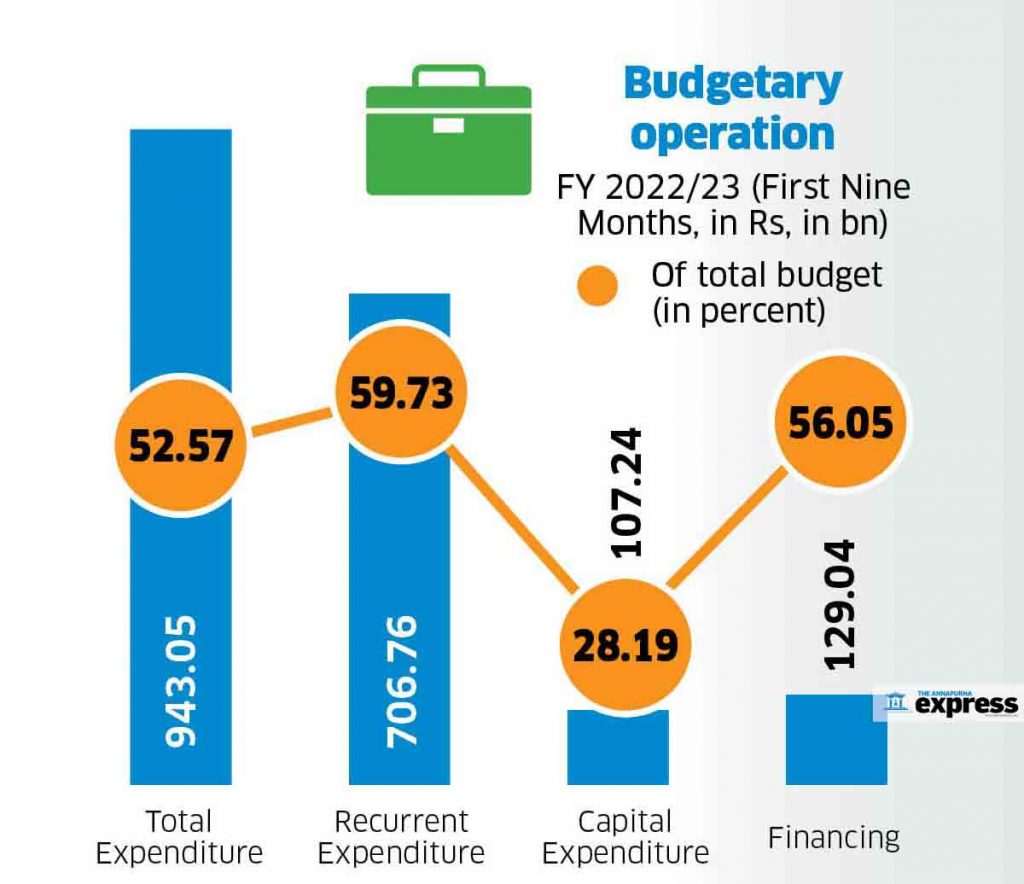 The data of the nine months of the current fiscal year of the Finance Ministry show revenue collection remains dismal even after the import restrictions were lifted. The federal government’s half of revenue comes from taxing imported goods. The Department of Customs (DoC) and Inland Revenue Department (IRD), the key agencies of the revenue regime, have reported poor revenue collection as of mid-April of this fiscal. DoC managed to collect only Rs 34.76bn in revenue in Chaitra (mid-March to mid-April) against the target of Rs 57.29bn.
The data of the nine months of the current fiscal year of the Finance Ministry show revenue collection remains dismal even after the import restrictions were lifted. The federal government’s half of revenue comes from taxing imported goods. The Department of Customs (DoC) and Inland Revenue Department (IRD), the key agencies of the revenue regime, have reported poor revenue collection as of mid-April of this fiscal. DoC managed to collect only Rs 34.76bn in revenue in Chaitra (mid-March to mid-April) against the target of Rs 57.29bn.
By the end of the third quarter of the current fiscal year, the department has managed to collect only Rs 285bn against the target of Rs 490bn, which is only 58 percent of the target. The story of IRD is also the same. The department has collected Rs 337bn in revenue as of mid-April, which is less than Rs 342.65bn collected during the same period last fiscal year 2021/22.
With DoC and IRD posting dismal results, the overall revenue of the federal government in the nine months of the current fiscal year has declined by 13.36 percent. The government’s revenue collection stood at Rs 683.20bn as of mid-April compared to Rs 789.26bn collected during the same period last fiscal year 2021/22, according to the Financial Comptroller General Office (FCGO). 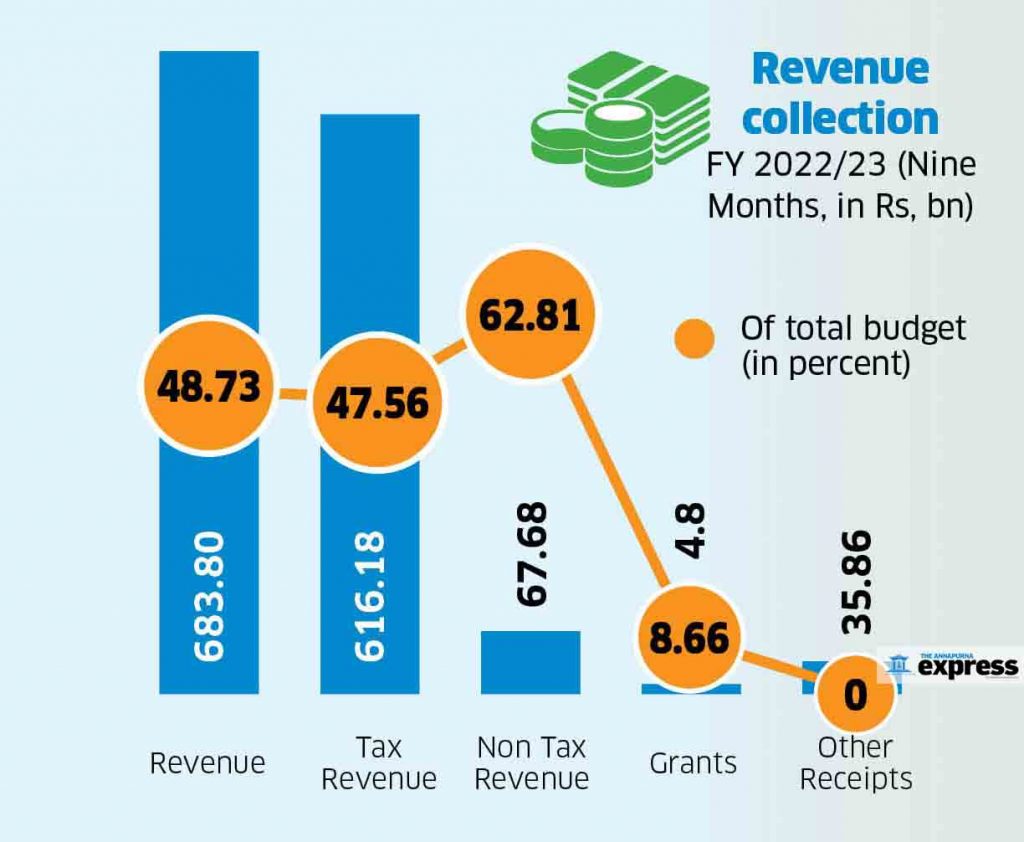 The collected revenue has not been enough even to meet the recurrent expenditure of the government which stood at Rs 706.76bn as of mid-April. The total expenditure of the government stood at Rs 943.05bn.
The collected revenue has not been enough even to meet the recurrent expenditure of the government which stood at Rs 706.76bn as of mid-April. The total expenditure of the government stood at Rs 943.05bn.
Continuous improvement in the external sector
With noticeable improvements in the country’s forex reserves, balance of payment (BOP), tourism income and remittance inflow, the recovery in the country’s external sector has continued. The country’s BOP is at a surplus of Rs 148.10bn in the eight months of FY 2022/23 compared to a deficit of Rs 258.64bn in the same period of FY 2021/22.
In US Dollar terms, the BOP is at a surplus of 1.12bn in the current fiscal year compared to a deficit of 2.17bn in the same period of the last fiscal year. 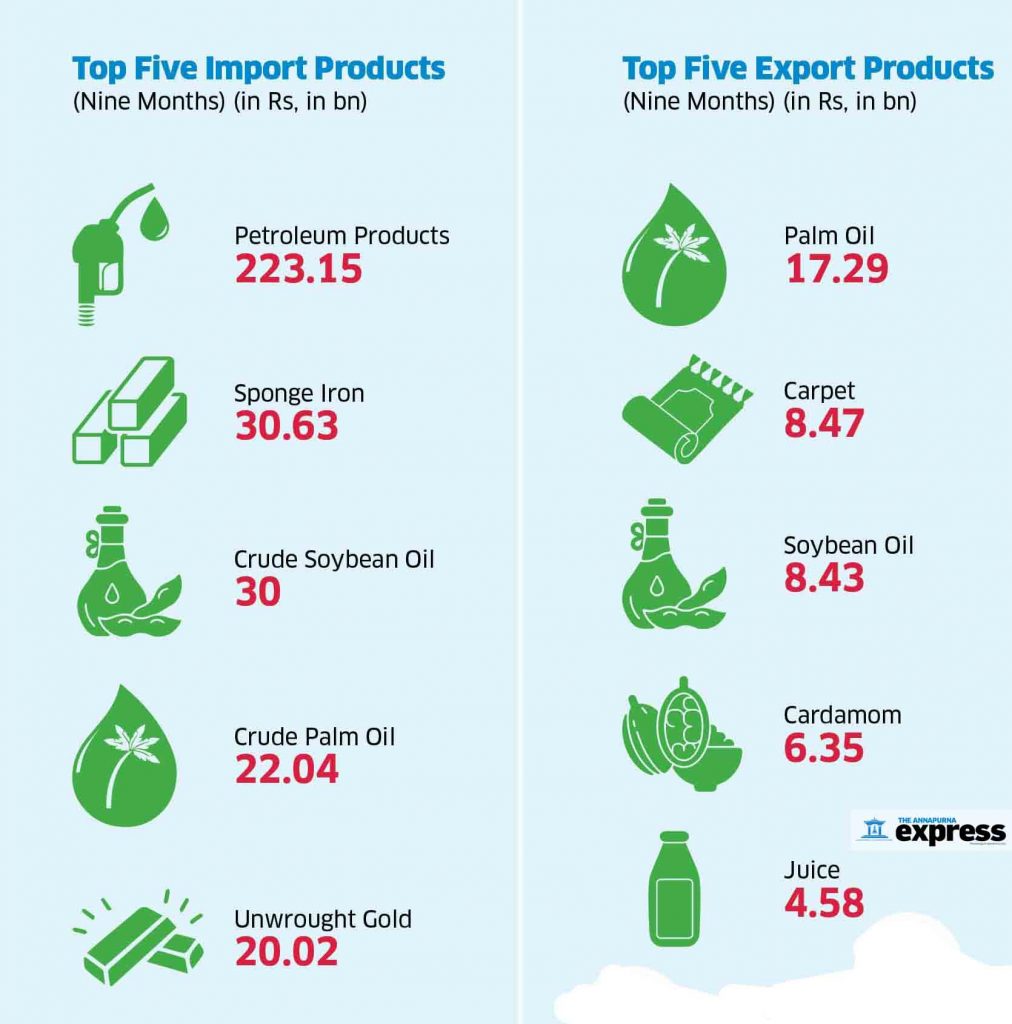 The country’s forex reserves increased by 15.2 percent in the review period. Nepal’s forex reserves stood at Rs 1,401.21bn in mid-March 2023 (Falgun) from Rs 1,215.80bn in mid-July 2022. In US dollar terms, the gross foreign exchange reserves increased by 12.1 percent to Rs 10.69bn in mid-March 2023 from Rs 9.54bn in mid-July 2022.
The country’s forex reserves increased by 15.2 percent in the review period. Nepal’s forex reserves stood at Rs 1,401.21bn in mid-March 2023 (Falgun) from Rs 1,215.80bn in mid-July 2022. In US dollar terms, the gross foreign exchange reserves increased by 12.1 percent to Rs 10.69bn in mid-March 2023 from Rs 9.54bn in mid-July 2022.
The central bank said that the foreign exchange reserves of the banking sector are sufficient to cover merchandise imports for 10.8 months, and merchandise and services imports for 9.4 months. Similarly, remittance inflows have increased by 25.3 percent to Rs 794.32bn in the review period. The inflow of remittances had decreased by 1.3 percent in the same period of the last fiscal year.
Imports start to surge 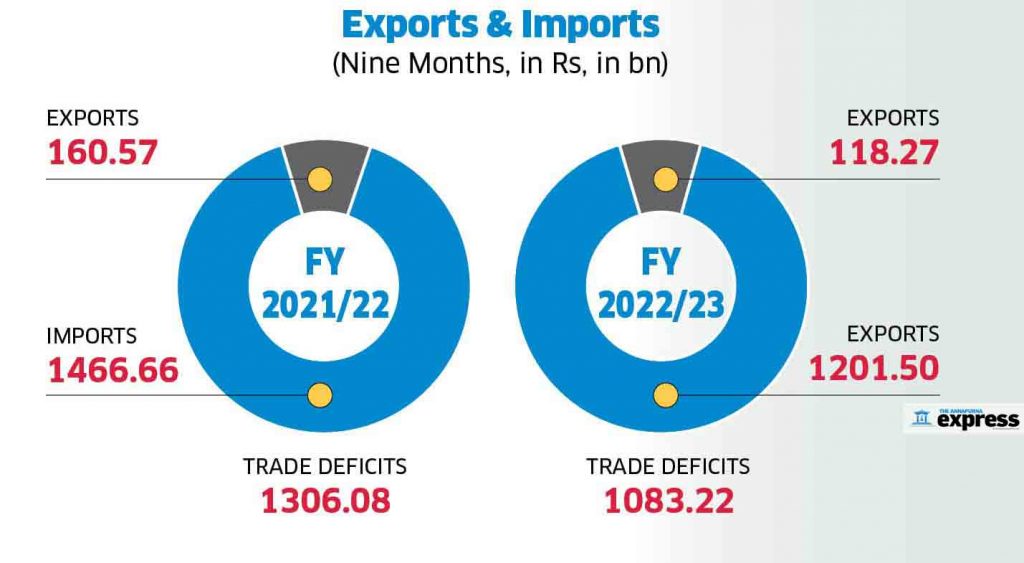 After the easing of the import restrictions, the country’s imports have started to surge again. Nepal imported goods worth Rs 143.123bn in Chaitra (mid-March to mid-April), the highest on a month-to-month basis, in the current fiscal year. The country imported goods worth Rs 139.22bn in Falgun (mid-February to mid-March), an increase of 10 percent compared to Magh (mid-January to mid-February).
After the easing of the import restrictions, the country’s imports have started to surge again. Nepal imported goods worth Rs 143.123bn in Chaitra (mid-March to mid-April), the highest on a month-to-month basis, in the current fiscal year. The country imported goods worth Rs 139.22bn in Falgun (mid-February to mid-March), an increase of 10 percent compared to Magh (mid-January to mid-February).
Nepal had imported goods worth Rs 142.31bn in Bhadra (mid-August-mid-September), the second highest on a month-to-month basis in FY 2022/23. However, the country’s total imports in the first nine months of the current fiscal year are lower than the last fiscal year. According to DoC, goods worth Rs 1,201.508bn were imported in the current fiscal year compared to Rs 1,466.662bn during the same period of the last fiscal year. The imports during the first nine months of this fiscal have declined by 18.08 percent.
Trade deficit decreased by 18 percent 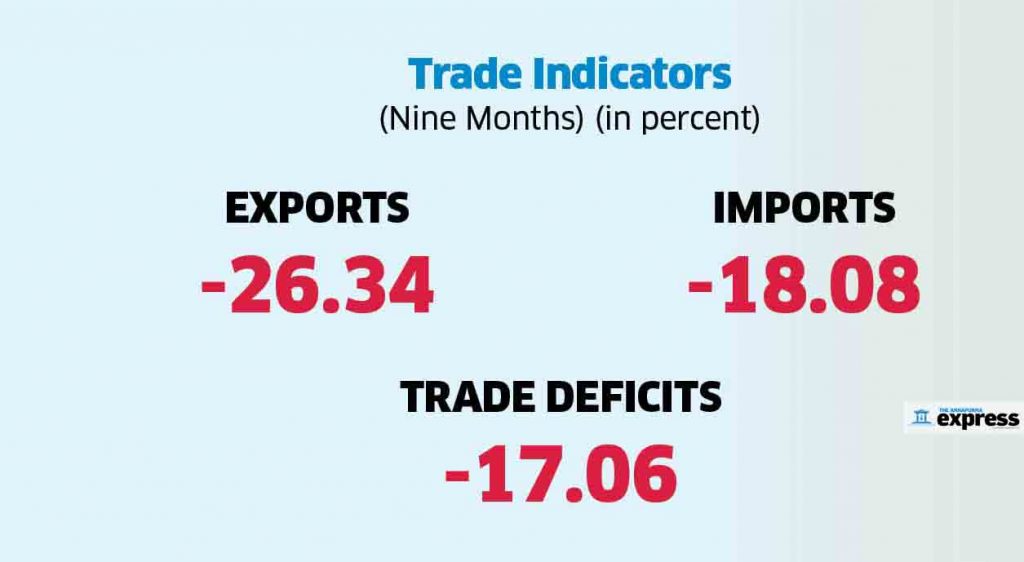 The country’s trade deficit has decreased by 17.06 percent in the nine months of the current fiscal year. According to DoC, the country’s total trade deficit has been limited to Rs 1,083.22bn in the nine months of FY 2022/23 compared to Rs 1,306.08bn during the same period of FY 2021/22.
The country’s trade deficit has decreased by 17.06 percent in the nine months of the current fiscal year. According to DoC, the country’s total trade deficit has been limited to Rs 1,083.22bn in the nine months of FY 2022/23 compared to Rs 1,306.08bn during the same period of FY 2021/22.
The trade deficit declined this fiscal as the country’s total foreign trade shrunk by 18.89 percent during the review period. Both imports and exports have decreased in the current fiscal year.
Tourist arrivals hit a four-year high in March 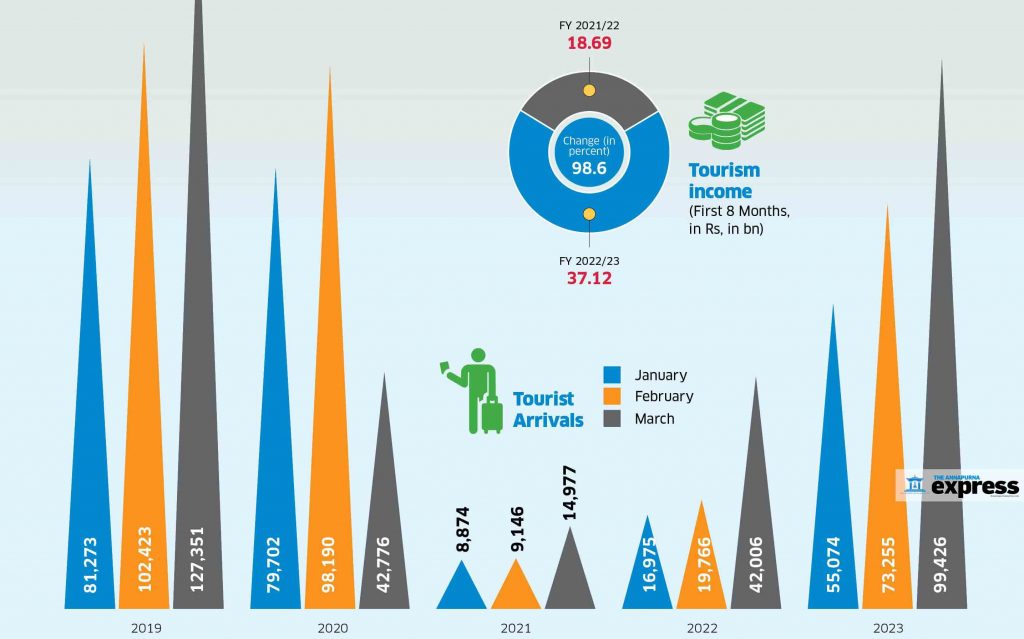 Continuing the upward momentum in 2023, the arrival of tourists in March hit a four-year high signaling that tourism in Nepal has largely recovered from the impacts of the Covid-19 pandemic. The latest statistics of the Nepal Tourism Board (NTB) show tourist footfalls in March 2023 stood at 99,426, the highest since March 2019.
Continuing the upward momentum in 2023, the arrival of tourists in March hit a four-year high signaling that tourism in Nepal has largely recovered from the impacts of the Covid-19 pandemic. The latest statistics of the Nepal Tourism Board (NTB) show tourist footfalls in March 2023 stood at 99,426, the highest since March 2019.
According to NTB, Nepal welcomed 42,006 tourists in March 2022, 14,977 tourists in March 2021, and 42,776 tourists in March 2020. According to NTB, 227,755 tourists visited Nepal in the first three months of 2023. Tourist arrivals have surged by 35 percent in March compared to February. Nepal welcomed 55,074 international visitors in January, 73,255 in February, and 99,426 in March.
Tourism income up by 98.6 percent 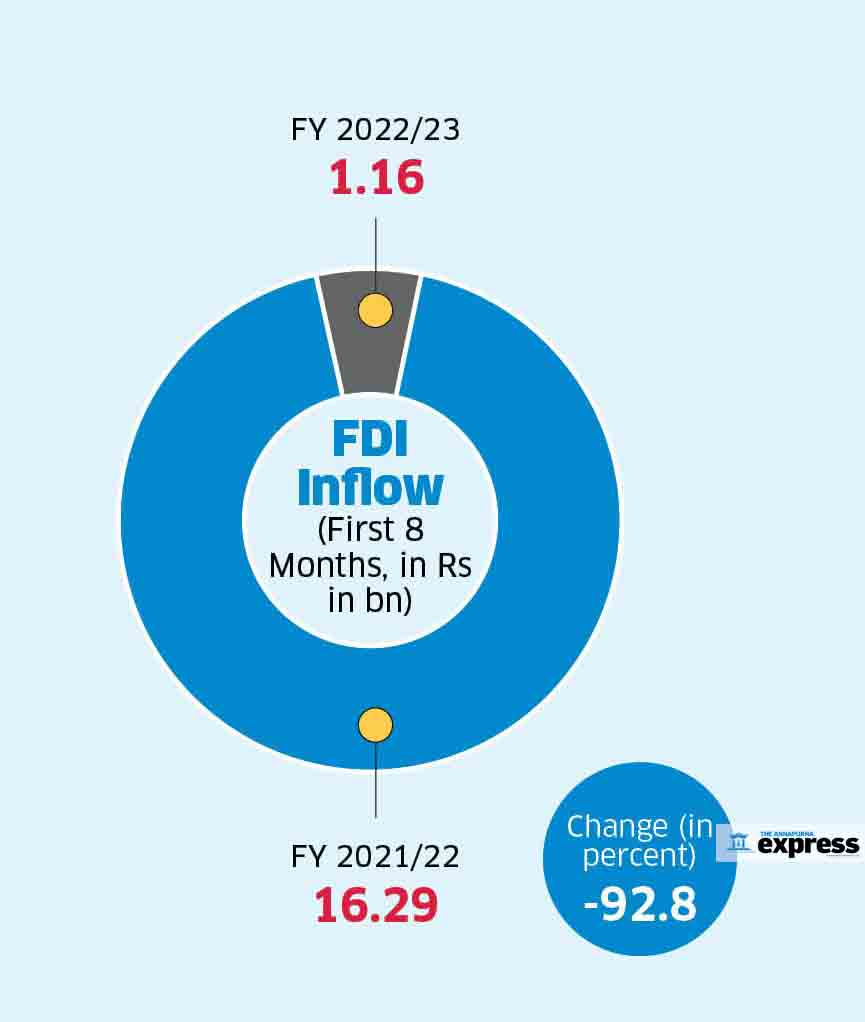
With international travel coming back to normalcy, Nepal’s tourism earnings have also recovered significantly. According to Nepal Rastra Bank, Nepal earned Rs 37.12bn in the eight months of FY 2022/23 compared to Rs 18.69bn during the same period of FY 2021/22. The country's tourism earnings nosedived in FY 2019/20, and FY 2020/21 due to restrictions on international travel as countries imposed various lockdowns to contain the spread of the Covid-19 pandemic.
Forex reserves surged by 15.2 percent 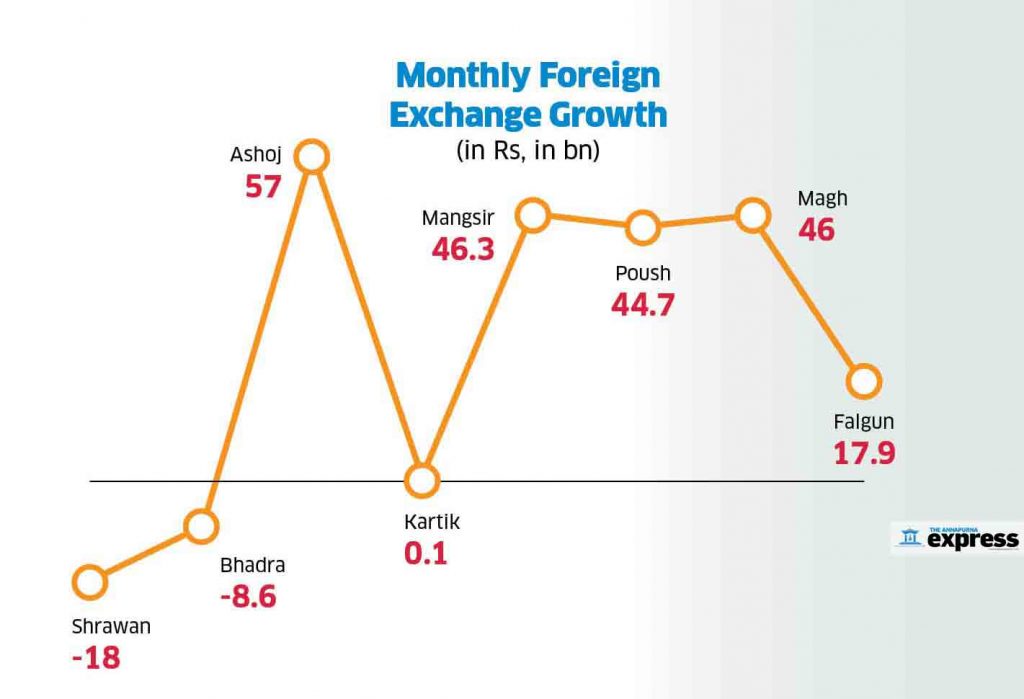 The country's forex reserves increased by 15.2 percent in the eight months of the current fiscal year. According to the NRB report, Nepal’s forex reserves stood at Rs 1401.21bn in mid-March, 2023 (Falgun) from Rs 1215.80bn in mid-July 2022. In US dollar terms, the gross foreign exchange reserves increased by 12.1 percent to Rs 10.69bn in mid-March 2023 from Rs 9.54bn in mid-July 2022.
The country's forex reserves increased by 15.2 percent in the eight months of the current fiscal year. According to the NRB report, Nepal’s forex reserves stood at Rs 1401.21bn in mid-March, 2023 (Falgun) from Rs 1215.80bn in mid-July 2022. In US dollar terms, the gross foreign exchange reserves increased by 12.1 percent to Rs 10.69bn in mid-March 2023 from Rs 9.54bn in mid-July 2022.
NRB in the report said the foreign exchange reserves of the banking sector are sufficient to cover merchandise imports for 10.9 months, and merchandise and services imports for 9.4 months.
Remittance inflow surged by 25.3 percent 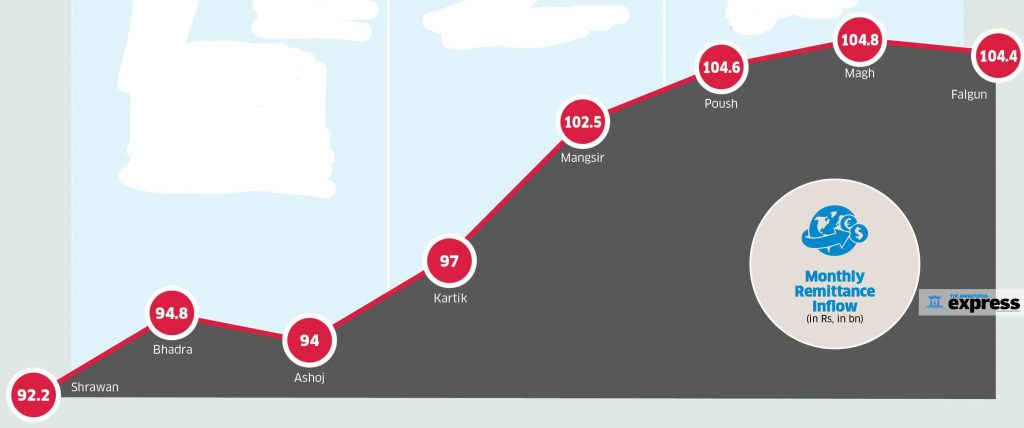 NRB has said that remittance inflow has increased by 25.3 percent to Rs 794.32bn in the eight months of the current fiscal year. Remittance had decreased by 1.3 percent in the same period of the last fiscal.
NRB has said that remittance inflow has increased by 25.3 percent to Rs 794.32bn in the eight months of the current fiscal year. Remittance had decreased by 1.3 percent in the same period of the last fiscal.
In US Dollar terms, remittance inflows increased by 14.8 percent to 6.09bn in the review period against a decrease of 2.6 percent in the same period of the previous year.
Petroleum products imports decline in quantity 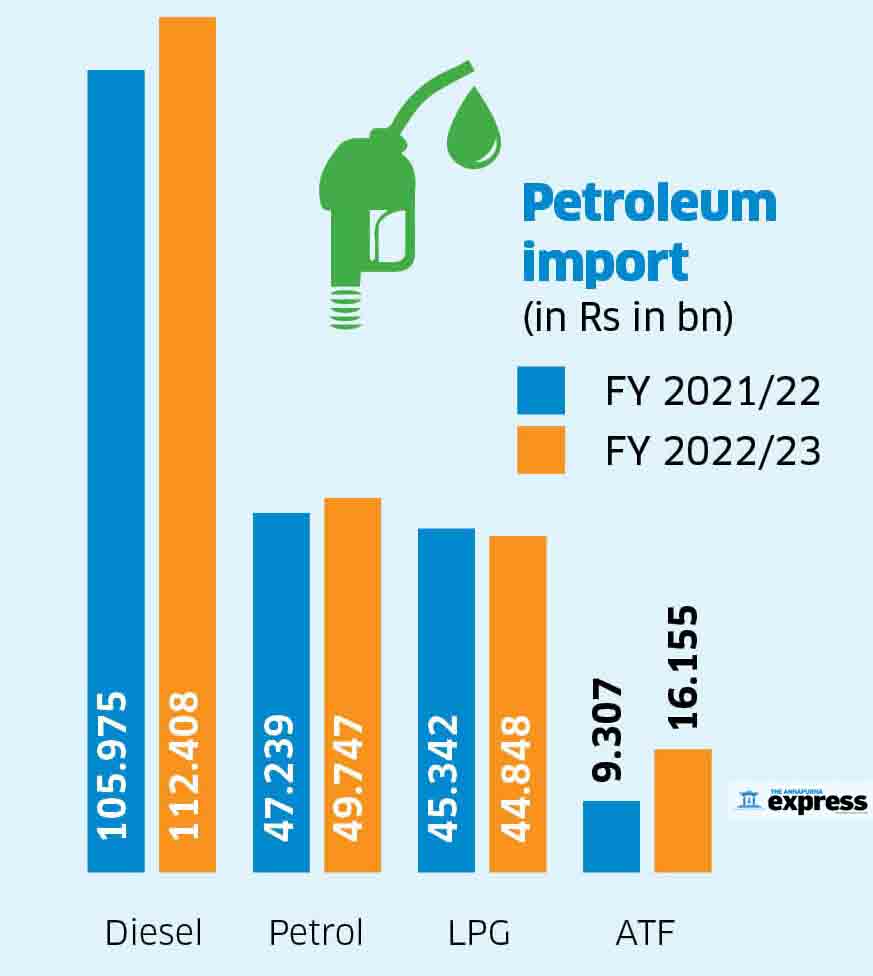
The quantity of all petroleum products (diesel, petrol, LPG, and ATF) has declined in the nine months of FY 2022/23. The quantity of diesel imports decreased by 26.85 percent in the review period compared to the same period of FY 2021/22. However, the import value has increased by 6.07 percent.
Similarly, the quantity of petrol imports also declined by 9.25 percent but the import value increased by 5.30 percent. This is mainly because of the surge in fuel prices caused by the Ukraine-Russia war.
Pawan Prajapati: FNCCI needs to focus on reducing gap between private sector and BFIs
The Federation of Nepalese Chamber of Commerce and Industry (FNCCI), the apex body Nepali private sector, has recently elected its new leadership. The representatives of FNCCI's district chambers and associate organizations across the country participated in the election. Pawan Prajapati, President of Pokhara Chamber of Commerce and Industry, was in Kathmandu to participate in the FNCCI jamboree. The entrepreneurs of Pokhara, one of Nepal’s major business hubs as well as tourism centers, have been affected by high interest rates and a slowdown in business activities.
Pratik Ghimire of ApEx talked to Prajapati regarding FNCCI’s new leadership and issues surrounding Pokhara’s business sector.
What should be the priority of the new leadership of FNCCI at a time when businesspersons across the country are facing multiple problems?
The new leadership of FNCCI has a lot of challenges ahead of it. Of late, the relationship between businesspersons and banks and financial institutions (BFIs) has soured due to high interest rates and a shortage of investible funds in the financial system. There have also been problems with imports and exports.
Hence, FNCCI should focus on creating a friendly environment between the private sector and the BFIs. Since the private and banking sectors are two sides of a coin, the new leadership should work to get out of the current crisis.
The government is working on the next fiscal year’s federal budget. What should be the focus of the upcoming federal budget?
We expect that the government will incorporate policies in the new budget that would help businesses. The government should create an environment where businesspersons will get loans easily, and that it safeguards local production and promotes exports. It will be better if the government consults with the private sector including FNCCI to make a package plan to reduce the trade imbalance.
As the President of the Pokhara Chamber of Commerce and Industry (PCCI), what are the new initiatives taken by PCCI in recent times?
Our team got elected only seven months ago. We took the leadership of the PCCI during a very challenging time. Yet, we have been working our best to help entrepreneurs. We have been regularly lobbying for a better business environment with the government and authorities concerned. For instance, our team recently met Prime Minister Pushpa Kamal Dahal and gave our suggestions to create a business friendly environment. Also, PCCI has planned to construct a multi-purpose building. It aims to promote the products of the producers of the Gandaki Province under one roof.
Which business sectors were the worst hit due to the high interest rates and liquidity crunch?
Pokhara is mainly known for its tourism industry. And it is the one that has been hard hit by the current economic recession. If the tourism business surges, all the other sectors in Pokhara will benefit. If our business becomes stable, it will help the national economy. Hence, the government should focus on boosting the tourism industry. And there is a narrative that Pokhara only has Fewa Lake and Mt Machhapuchhre. But we must work to establish more tourist attractions and destinations.
What is PCCI doing for tourism entrepreneurs?
PCCI has not waited for the government to act, but we have been working on our own to invite tourists. A team of tourism entrepreneurs from Pokhara is currently in Patna, India to promote Pokhara tourism. Tourists should not be forced to visit Nepal. It won’t help a bit. We should create an environment for them to come to Nepal on their own. However, this is not possible only with the efforts of PCCI. The FNCCI should have the same voice and the new leadership should help us with this.
Entrepreneurs in Pokhara held high hopes from the Pokhara International Airport. However, international airlines are yet to show any interest in the airport. What’s your say about this?
We have a lot of expectations from Pokhara International Airport, and we have requested the Prime Minister to seriously work on bringing international airlines to the airport as soon as possible. I hope the upcoming visit of the Prime Minister to India will give it a breakthrough. It will not only help Pokhara but the entire Gandaki Province. PCCI played a leading role in establishing the international airport. And if the government fails to start international flights from Pokhara, we will lobby to bring international airliners to the airport.
How much time do you think it will take for the economy to come out of the recession?
The Covid-19 pandemic, issues related to BFIs, and the Russia-Ukraine war affected our economy a lot. But the situation is gradually getting normalized, yet there is a long way to go. The Nepal Bankers' Association has also said that they will reduce the interest rate to single digits. If everything goes well, I guess the situation will be normal in a couple of months. The finance minister has said the same. We are ready to do everything at our disposal to revive the ailing economy.
Arvind Agrawal: Internal correction, deep awareness will set the market right
Arvind Agrawal is a renowned academician who specializes on the relationship between society and market. A PhD in Business Management from JJT University in Rajasthan, he has penned several books on society, market and a wide range of other issues. Pratik Ghimire of ApEx speaks to him about topics ranging from consumerism to religion to market ethics.
Modern society is governed by the market, so much so that the market is eager to sell even death. What is your view on the age of rapacious consumerism?
How pertinent a question to begin the conversation! Death, that you brought up being made a commodity, is eternal. Our Eastern way of handling it has been to live life preparing for Moksha. We always balanced, and in the East we do so to a great degree even today, a balance among four pillars—Dharm, Arth, Kasm and Moksha. Becoming market centred is only a recent aberration. If being greedy for aggregation, monopoly and profiteering is unethical on the part of capitalists, being an excessive consumer is unethical on part of the common person.
There’s nothing wrong in enjoying materialistic comforts, provided we, both the buyers and business owners, can observe the much needed balance, and the good news is that it isn't impossible. Human society is quick in learning, and to trigger the awareness, I've provided starting points in my book ‘Addwit Vyavsay Upanishad’ for business owners, and in a very small handbook Kasht Customers Ke for the common people who are 24x7 consumers.
You talk about balancing Dharm, Arth, Kasm and Moksha, which are part of the Vedic culture. How do you think this culture could be applied to create an ethical market practice?
Let me break up my response into two parts—ethical, vedic. The meaningful transliteration for UNETHICAL BEHAVIOUR is BHRASHTACHAR, which is BH4ASHT+ AACHAR, the behaviour which is a deviation from natural one, the SVABHAV. The materialistic lifestyle that we live today, something that we take as status symbol, something without which we are made to feel non-progressive, has been pushed systematically after industrialization, which took place about 350 years ago. If we go back 1500 and earlier, the East had been the bedrock of prosperity and much superior lifestyle for entire humanity.
Talking in today's glossary, we produced as much as 35 percent of global production. That gets us to the second part, VEDIC. in general when we utter this word, the impression we get is—something that WAS, the PAST, something to do with GRANTH, the scriptures. No it's not so. Vedic, Sanatan, Puratan. One of the meanings of Puratan also is, that which doesn't get old or outdated. So, in whatever way, vedic is even concurrent.
And, looking back as per the needs and circumstances this way of living has given treatises on a wide range of themes—from Kathopanishad to Kaam Sutra, and from Shiv Sutra to Mahabharata, from Vimaniki to Agni Puraan. Perhaps it is in this continuum that yours truly has been used by the Cosmic Being to provide an Upanishad to set right the anarchical forces in the market and economy. Vedic system if we stick to the word VEDIC, for the economy had been socio-nonics—based on a social process rather than industrial process.
This social process had as its hallmarks—(1) the four pillars we already discussed, and (2) a way of life where nature was never exploited; in NO WAY we hurt nature, we rather respectfully nourished it.
Do you think people are ready to adopt that culture? And how shall we ensure that the market will always be the same?
Well, if we are frustrated about materialistic lifestyle, and also we aren’t ready for the Vedic lifestyle, then what alternative third option do we have? There simply isn’t any. We, the people and culture of the East can not only live by balancing among Dharm, Arth, Kasm and Moksha because we have never really given it up; but also in a way onus lies on us to show to the rest of cultures and ideologies that such a balanced living is not only possible but also good for future and nature.
How to ensure that the market remains alive?
Well yes, if you notice, among the four pillars, two elements, the Arth and Kaam, pertain to the market. So, we can be sure that the socio-nomic system will remain alive and kicking. Its appearance could be different because it operates more like a self regulated system rather than one that we see today—the market regulated either by government or by capitalists or jointly by both. In fact that’s one reason capitalists and government may not be too keen to let vedic socio-nonics happen, but let me also quickly caution—it will be a short-sight at least on part of policymaking because colonisation today is practised in form of remote control on other country’s people’s buying capacity. I can detail this up separately.
About 95 percent of the global wealth is controlled by the 5 percent rich. With this imbalance of wealth, will the market ever be ethical?
You’ve brought up the true nature of the scenario into this discussion. If not that extreme like Mahabharata yuddha, we will see (and be part of) at least a major rally of corrections. As far as I can see, this will happen in a very organic manner. I’m saying this based on my experience of interactions with investors and capitalists—many of them too are human beings, and one part of their soul is longing for overcoming the vicious cycle of earning more money. The West has started taking the purpose of capital to quote the title of one book recently published.
In fact I affectionately pity them that the four pillars of Dharm, Arth, Kasm and Moksha have not been available in that culture. Through ‘Addwit Vyavsay Upanishad’, which is less a book and more a framework, we can take one baby step. I'm not saying things will get set right within 1 year or five years. The harm caused by 400 years of industrialised aggression may take anything like one full generation to be corrected, but that will be our gift to our future generations.
According to the laws of nature, only the ripe ones fall and prepare seeds for the next tree. Has today’s market become too ripe or rotten?
How nicely you’ve articulated—ripe or rotten! Superb! I feel a bit incompetent to guess whether the market with its baggage of unethical business practices is ripe or rotten. However I do know that in the same Mother Nature there are worms and bacteria too. For Nature (which is more than trees, animals, rocks and rivers), nothing, mind you NOTHING is too big to tackle.
The day unethical business practices cross that limit, Mother Nature has unimaginable tools, few of that we know—tornadoes, earthquakes, cyclones. All this not to scare, but to draw the point that Nature works in most unimaginable ways, and one of its methods is also to keep correcting human instincts. Time and again we ask ourselves—is whatever that I'm doing right, is it true to my own nature, does it give me the sense of fulfilment? This reflective thinking will get us back to our SVABHAV, the innate behaviour.
By that innate behaviour we truly are not excessive consumers as we've been made to become by the industrialised society. This internal correction, this deep awareness will set the market right. In Vyavsay Upanishad this theme has been covered, and to quote one sentence from there—the nature of Nature is to give more than it received. When we will go back to our own nature of giving more than receiving, the market will automatically start behaving ethically. It is only the unaware who can be manipulated. Let’s be aware.
In the Arth Yudfha, we all are Arjun in our own small way. We cannot afford to remain confused, we cannot afford inaction on our part.
Bikram Raj Gautam: Profit should not be calculated with the money airport makes
The Pokhara International Airport (PIA) was inaugurated on 1 January 2023 by Prime Minister Pushpa Kamal Dahal amid much fanfare. However, the business of the third international airport in Nepal has not been as expected since its inception which has put a question mark on the viability of the new airport. Critics argue that the airport is a debt trap project as it was constructed with a $215m loan from China’s Exim Bank in 2017 and not a single international flight has been operated from the airport ever since its inauguration.
Pratik Ghimire of ApEx sat down with Bikram Raj Gautam, Chief of PIA to talk about the business the airport is up to. Excerpts:
Can PIA make a good business?
Definitely. We have a target market. We can target the Indian and Chinese markets as many tourists from our neighboring countries visit Nepal and many of them come to Pokhara. Also, we can target Nepalis who are in the Gulf countries for employment. We can also connect to the United States, Australia, the United Kingdom, and other countries where Nepali students go for higher studies. Data shows that around 40 percent of tourists who visit Nepal come to Pokhara. We have the opportunity to connect them directly to Pokhara. So, there is no question about the viability of PIA. I have spent around 26 months in this airport, and with my experience and research, I can say that there is enough space for business.
On the last World Tourism Day, we invited representatives of many international airlines operating in Nepal. We’ve found that they are positive about the opportunities and possibilities of PIA. They are also doing their part of the homework and research for their operation from PIA.
It’s not that nothing has happened. It is natural for entrepreneurs to look for someone who can initiate operations in new business and others will jump by analyzing the initiation. The same thing is happening here. Moreover, a business is an environment. To run it smoothly, every small thing matters. From the legal policy to the behavior of flight attendants, everything matters to help PIA run smoothly.
Each of us should take ownership of this airport as it will help to boost the regional and national economy. Everyone should contribute to the maximum utilization of this airport.
Has there been enough lobbying to run this airport?
Yes. All tiers of the government have been doing as much as they can. All other stakeholders concerned are also doing whatever they can do from their levels. But what I have felt is, we have to be united and have the same voice regarding the PIA, and then only the result will come. For example, the private sector and government should share their plans and problems with each other and should work together.
Also, nothing is more effective than word-of-mouth promotion. For instance, for my foreign friend, my recommendation to visit Nepal is more effective than any kind of other promotional or advertising material. So, we should keep up to support PIA in these ways. 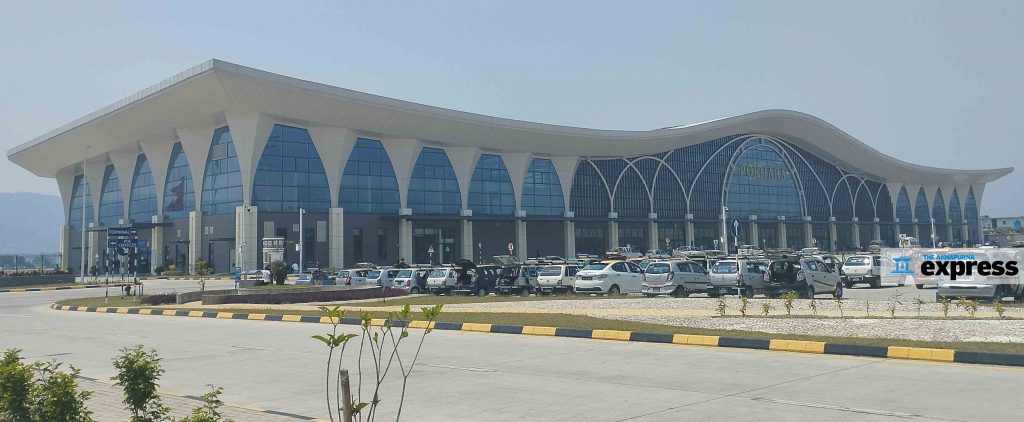
Critics say that the loan that Nepal received to develop PIA can actually turn into a debt trap for the country. How do you view this argument?
The construction of this airport cost around Rs 22bn. We won’t be able to make a profit instantly as it is a long-term investment. The profit of PIA should not only be calculated in terms of the airport’s earnings. But rather we should see how much help the airport provides in terms of services to passengers, small and large-scale tourism businesses and the development of Pokhara city, among other factors.
We provide domestic flight service from this airport for 18 hours a day. Around 3,000 passengers are getting services from here daily. From the domestic operation, we earn around Rs 300m annually. And as soon as we start a few international flights, we can easily earn Rs 1bn annually. So, the development of PIA is not a ‘debt trap’. The Civil Aviation Authority of Nepal (CAAN) also analyzes our business.
There have been issues with birds. Is the airport technically in a safe location?
Pokhara is home to a lot of bird species. Among them, there are around 108 bird species around the PIA vicinity. We can’t imagine the sky without birds. It’s a part of nature and the same thing applies in all the airports across the globe. This issue is not with us only. We have to ensure that the planes fly at a distance from birds.
We are doing our best in this regard. From regular patrolling to using scaring devices, reflectors and trimming grasses, we have been doing everything at our disposal. I think not many airports in the world use better systems for the management of birds like us. Since the start of the operation of the airport, the activities of birds have significantly reduced. However, we can’t have skies free of birds.
How do you ensure that PIA is among the technologically best airports in Nepal?
We have been using top-notch technology and equipment that an international airport needs to have. There has been no compromise in this respect. For example, we have Instrument Landing System technology in PIA that no airport in Nepal has used. The Gautam Buddha International Airport has this technology too, but they haven’t used it yet. Similarly, we have many other similar technologies with international standards.
Then why is the public negative about the airport?
It’s all due to sentiment. Initially, everyone was positive about this project. Not only the ordinary people but also the private sector, media, and all stakeholders supported us. But after the recent plane crash of Yeti Air, everyone started having second thoughts about the airport. Yet, there was no issue on our side. All of our technology, equipment and system are in perfect condition. Soon after the inauguration of the airport, people saw the crash near the airport which affected their sentiments to a great degree. But we are growing and everything will be better with time.
Which international airlines are in contact with PIA for flight operations?
We are in regular touch with Korean Air, Jazeera Airways, Thai Smile Airways and Fly Dubai. Yet, there is nothing agreed upon as of now.
Expensive Parliament
In a single day, the Parliament Secretariat spends more than 1m in the various sections. It includes the rent of Parliament buildings, allowances, transport fees and other expenditures. But, both the House of Representative and National Assembly have made very little or little progress in the law-making.The new parliament elected from Nov 9 elections has not passed even a single bill. On several occasions, lawmakers go to Parliament only to register their attendance. The list of abuse by lawmakers goes on.
The daily rent for the Parliament building is Rs 416,000, while Rs 550,000 is allocated for allowances and transport fares of lawmakers, and another Rs 100,000 is earmarked for miscellaneous expenses. This translates to a total expenditure of Rs 20m on parliamentary meetings. Lawmakers have expressed dissatisfaction over the government's failure to provide adequate business to the parliament.
The parliament has been devoid of any meaningful business as the government and parties were preoccupied with the formation of the government and the elections of the President and Vice-president. In the four months since the election, the parliament has managed to draft House of Representatives Regulations.
Additionally, several bills including the Prevention of Money Laundering and Promotion of Business Environment Bill, Enforced Disappearances Enquiry, Truth and Reconciliation Act (Amendment) Bill, Food Hygiene and Quality Bill, and Constitutional Council (Functions, Duties, Powers and Procedures) Act Amendment Bill have been tabled for discussion in parliament. The government aims to expedite the Enforced Disappearances Enquiry, Truth and Reconciliation Act (Amendment) Bill through a fast track process.
However, the main opposition, CPN-UML, has been insisting that the discussion on the Bill should take place in parliament. The government was also expected to table the Nepal Citizenship Act Amendment Bill which was previously refused authentication by the former President Bidya Devi Bhandari. The government has not yet tabled the bill.
Furthermore, the government has not tabled 28 bills, which become inactive automatically with the end of the previous parliament’s term, in parliament.
The Federal Parliament Secretariat has been providing Rs 18,000 as house rent allowance to members of both houses who do not have a residence in Kathmandu Valley. However, lawmakers, who have their own house in the Valley, have been collecting Rs 9,000 as house maintenance allowance every month. According to the secretariat, out of 124 lawmakers, who have residences in the valley, 123 are collecting house rent allowance from the secretariat every month. Sunil Sharma of the Nepali Congress is the only lawmaker who has refused this allowance. Staffers of the secretariat showed Sharma wrote to the secretariat stating that he doesn’t need a house maintenance allowance.
Several prominent lawmakers, including NC President Sher Bahadur Deuba, CPN-UML Chairman KP Sharma Oli, CPN (Unified Socialist) Chairman Madhav Kumar Nepal, Rastriya Swatantra Party Vice-president Dol Prasad Aryal, and Rastriya Prajatantra Party Vice-president Bikram Pandey, among others, have been availing themselves of the house repair allowance.
Abdul Khan: Defeating Upendra Yadav is a piece of cake
The CK Raut-led Janamat Party recently left the government. Abdul Khan had represented the party in the cabinet with the portfolio of the Ministry of Water Supply. Pratik Ghimire of ApEx caught up with Khan to talk about the party’s plans for the April 23 by-election and other political matters. Excerpts from the interview: Why did you leave the government? Our impression is that Prime Minister Pushpa Kamal Dahal and other coalition partners didn’t value our participation. We felt that several times. First, they promised to give us the Ministry of Industry, Commerce and Supplies, but then they balked and handed us the reins of the Ministry of Water Supply instead. When the coalition changed, without our demand, Dahal publicly pledged to us the Ministry of Industry, only to eat his words later on. We felt humiliated and left the government. Like other political parties, your party has also started a power game, hasn’t it? If we were in the power game, why would we quit the government instead of bargaining? Our party is always committed to our values and we will never be a part of dirty politics. Other Madhes-based parties enjoy the luxuries of Kathmandu and forget their constituencies. Isn’t your party on the same path? That’s not true. Our party chair and all of the parliamentarians visit their constituencies often and pay heed to the problems of local communities. Sadly, our performance is short of public expectations. How are your party’s by-poll preparations going on? The preps are going great. Our main focus is on Bara-2 where we enjoy widespread public support. Bara-2 is the pocket area of Janata Samjbadi Party. They won the Nov 20 polls there without a coalition. Do you think your party will be able to defeat Upendra Yadav this time, when he has a ruling coalition behind him? Our candidate Shivachandra Prashad Kushwaha is from Bara-2 itself (he is not an outsider), which is our main strength. He was defeated in the Nov 20 polls in the same constituency with only 400 votes. At that time, he was contesting from a different party. Our candidate has huge public support. What’s more, the people have already witnessed our commitment and it has become clear to them that we are different from other political parties. So, he will get more votes this time as he has joined our party. As for Yadav (the rival candidate), he failed to win from his home constituency in Saptari. How will he win in Bara-2 as a tourist candidate? We will win comfortably.



